The moon and Spica, a bright star in the constellation Virgo, are unusually close tonight. Go out and have a look.
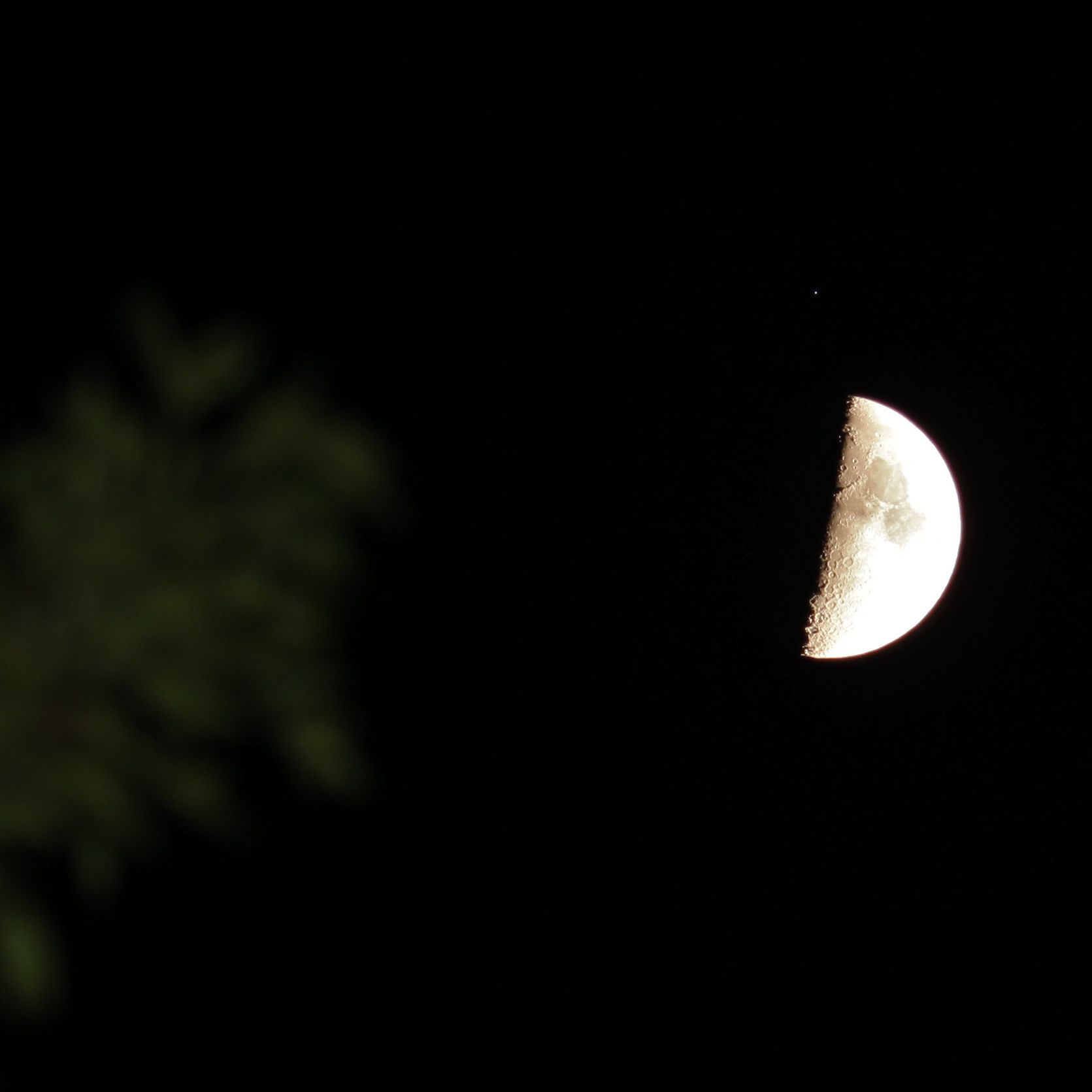
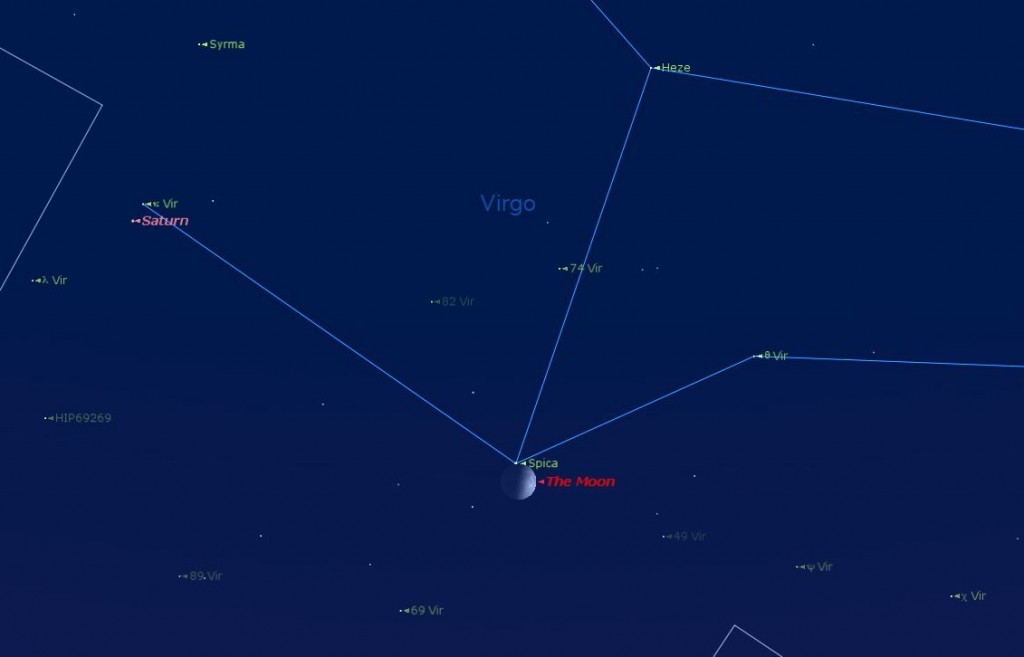
Carpenter Bees look like Bumble Bees, but are black all over with an almost hairless abdomen. A penchant for boring into wooden structures to make their homes makes them unpopular with owners of wooden homes – understandably.
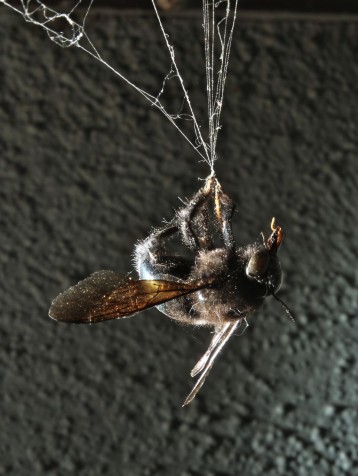
I snapped this one, dead, hanging directly over the back door porch. Which is a little worrying, seeing as the web it’s hanging from belongs to one of these guys:
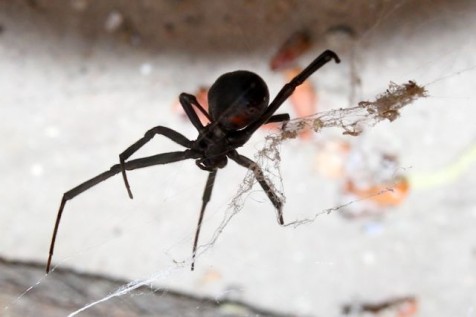
Recognizable by its bulbous abdomen and red hour-glass insignia, the Black Widow spider weaves a characteristically disheveled web. This Western Black Widow, Latrodectus hesperus, is the only kind found in California. (Reminder again that I’m visiting the US at the mo’; we don’t get these in the UK – thankfully.)
The popular myth that a Black Widow bite will, guaranteed, kill a person outright dead everytime seems a bit overblown (ref. University of California.). But reports of painful muscle cramps, fever etc. suggest gloves are a good idea if you’re clearing out that dark corner of the garage; that’s where we found this guy.
See how in the top photo the web shines so nicely in the backlight? That property, combined with the phenomenal strength of spider silk, wasn’t lost on the US military who, during World War II, harvested Black Widow spider silk for use as the cross-hairs of gun-sights (ref. Popular Science March 1944)
Here are some Carpenter Bees in happier times:
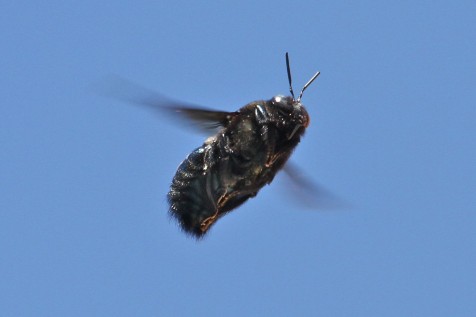
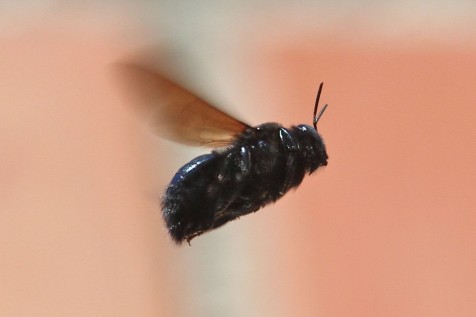
I’m still in California, and in the present heat-wave only good for staying indoors, reading stuff, and editing movie clips, like this one of the local hummers getting hot under the collar when an unwelcome, albeit suicidal, wasp pays a visit.
Wasps are aggressive and not above stinging a hummingbird (check out worldofhummingbirds.com) – hence the nervousness.
Incidentally, when I fished the wasp out, it wandered off a little crusty but still working. We’ve had others pull the same stunt since though, and it’s quite amazing how long they survive, virtually fully submerged in hummingbird syrup; I’m talking 36 hours or so. Presumably they have a tracheal breathing system like other insects, and can shut of their little breathing tubes if necessary; but this seems a long time to run on stored oxygen. Are they taking it from the water/sugar solution? Anyhow – something for another post.
Here’s something, or rather somebody, you might like to check out, especially if you’re partial to the ‘Passion Beauty Joy’ (PBJ) interpretation of the universe (as Bill Nye likes to put it). Likewise, if you enjoy the Symphony of Science series of videos, this will be up your street.
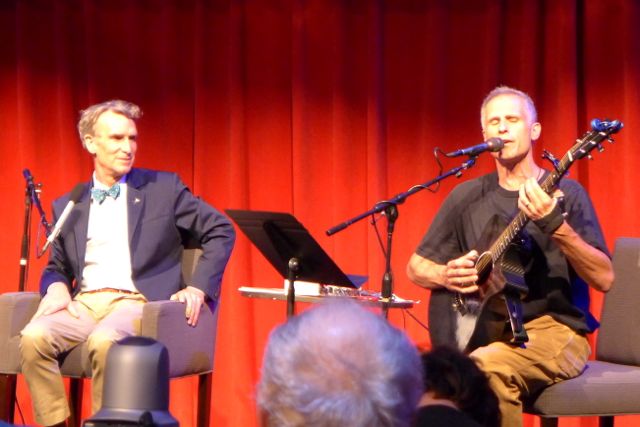
On his website, Peter Mayer describes himself as a writer of “songs for a small planet—songs about interconnectedness and the human journey”. Last night he guested at a special live broadcast of the Planetary Society‘s monthly radio show Planetary Radio Live: Science, Nature and Music. I usually catch the show, hosted by Matt Kaplan with Planetary Society regulars Bill Nye, Bruce Betts, and Emily Lakdawalla in podcast form back in the UK. But as I’m visiting family in the US right now, I got myself a ticket for the show at the KPCC studios in Pasadena, California.

Mayer sings about the universe and man’s relationship with it. He sings about stars, planets, galaxies; and evolution too.
Here’s the full recording of the event from KPCC, :
One song Mayer performed on the evening, ‘My Soul’ likens the number of galaxies to snowflakes in a snow storm. Here’s another recording of that track:
(Video by Connie Barlow courtesy ghostsofevolution)

Mayer’s background is interesting. Originally trained in theology and having spent time in seminary, he’s no longer a practising Catholic – aligning rather with Unitarian Universalism. That said, I got the impression Mayer is more interested in inclusiveness than the sort of divisions that can follow from too much emphasis on labels.
Incidentally, watching Mayer play an intriguing all-carbon-fibre guitar (by Rainsong Guitars), was an added bonus for me, as I go through something of a revival in my own attempts at guitar – which, believe me, call for cosmic scale inspiration.
You can catch previous Planetary Radio shows at the Planetary Radio website.
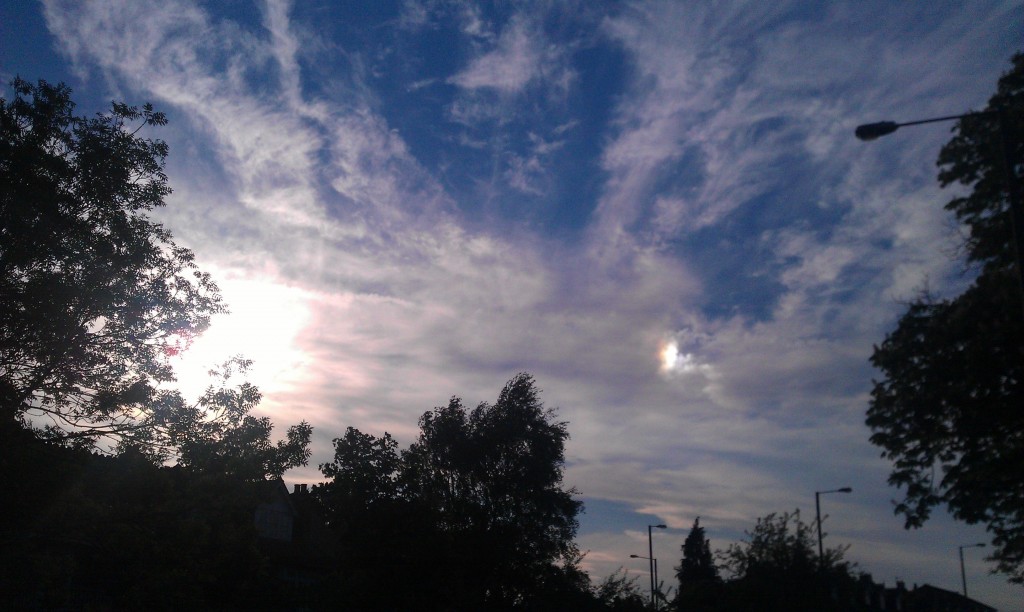
Despite keeping an eye out for strange atmospheric phenomena, my track record is not good, and I count myself lucky to catch the occasional rainbow. Lots of sailing, flying, and mountain walking over the years, with nice low, clear, horizons, and I’ve yet to see the almost mythical ‘Green Flash’.
But yesterday I saw a special type of mini-rainbow: a Sun Dog.
The concentrated patches or spots of light can be very bright, always at the same level of the sun, and always at a 22 degree angle from the sun.
They’re caused by light passing through clouds of ice crystals in the upper atmosphere, typically above 10 km. Ice crystals are all hexagonal in cross-section, and vary in size and length; but under the conditions that generate a sun dog, the crystals have become aligned in the air flow (because they’ll have a minimum air resistance in a shared direction) so that light passing through them leaves in the same direction: hence the 22 degrees.
I’ve seen photos of sun dogs, and may have seen fainter patches of rainbow that were actually unconvincing sun dogs. But this one was really bright, like a little sun hanging where it shouldn’t be. You’ll know it if you see one.
And if that’s piqued your interest for atmospheric phenomena, here’s an excellent lecture from Professor of Astronomy at Gresham College, Carolin Crawford, who explains better than I can Sun Dogs (from around 44 mins) and a whole bunch of other effects that I never knew existed.
After watching this lecture again, I think there’s also a bit of Coronae interference scattering visible in my photo: that pink/purple glow near the sun.

This is one of the most convenient pictures of a conjunction I’ve ever taken. I just opened the door of the flat, which has a reasonably clear view out to the West across the Thames, and there it was!
Like most folks, I hardly ever get to see Mercury at all – especially when I’m in the UK. With Venus and Jupiter as markers, it’s easy to find.
I should add that Mercury wasn’t actually naked-eye visible tonight, but clear enough in 15×70 binocs, and through the magic of digital photography of course. (This was 1/8″, f5.6, ISO 320, 135mm.)
These three planets will be shuffling around the same patch of sky for the next few evenings, so if you didn’t catch them tonight, try again tomorrow.
Update 3rd June 2013
The three planets have all strung out by now. Just Mercury visible in this shot.

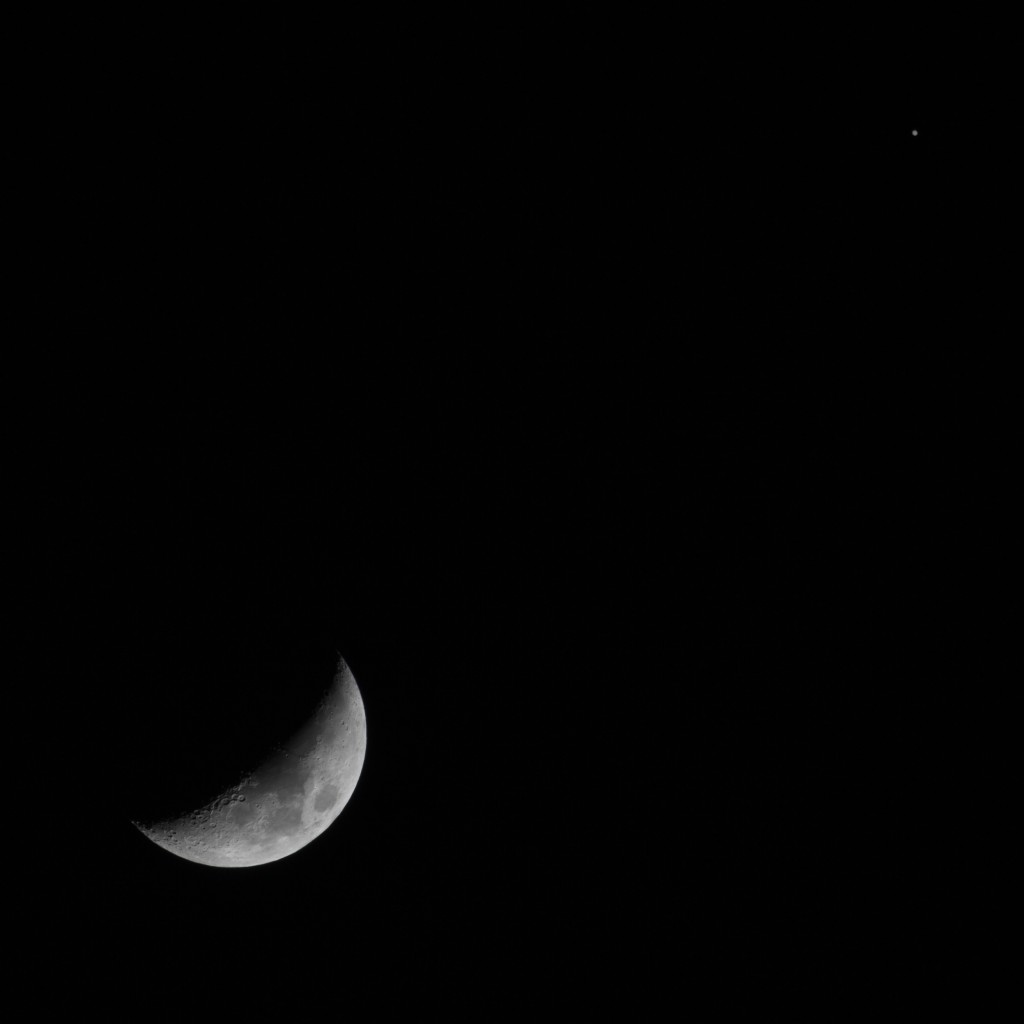
Jupiter close to the waxing crescent moon tonight. Click for (much) larger image. As usual for this type of shot: Canon 7D 100-400mm L at 400mm, 1/200 s, f5.6, ISO 200.
Earlier in the evening, Jupiter was visible in daylight – before the sun had set. First time I’ve spotted it with the naked eye.
UPDATED 21:00 PST. 12/03/2013
More comet PANSTARRS tonight. This time with the crescent moon, and a few aircraft trying to get into shot as usual:

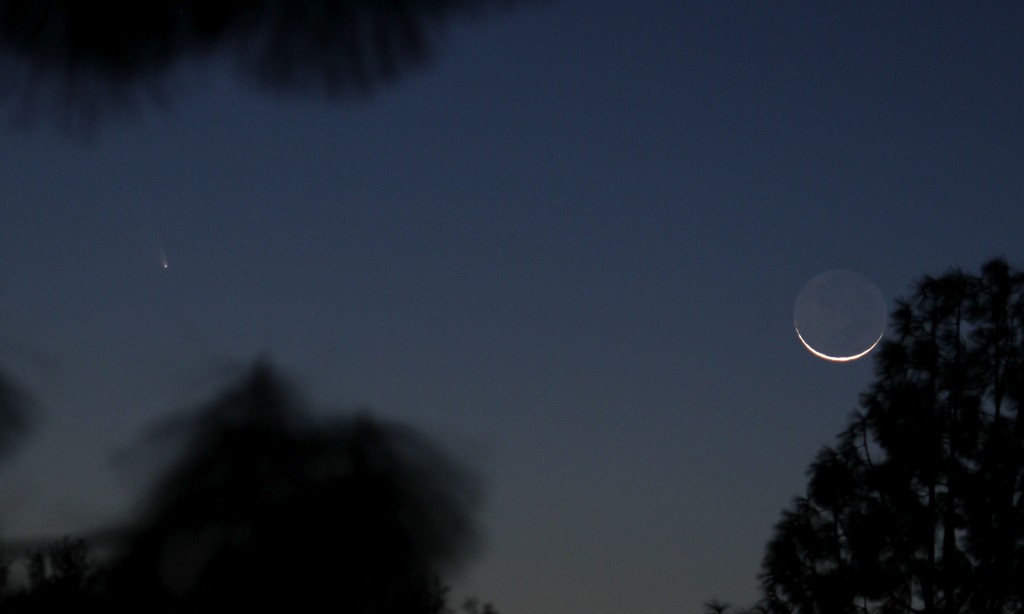


Aircraft getting in on the act:


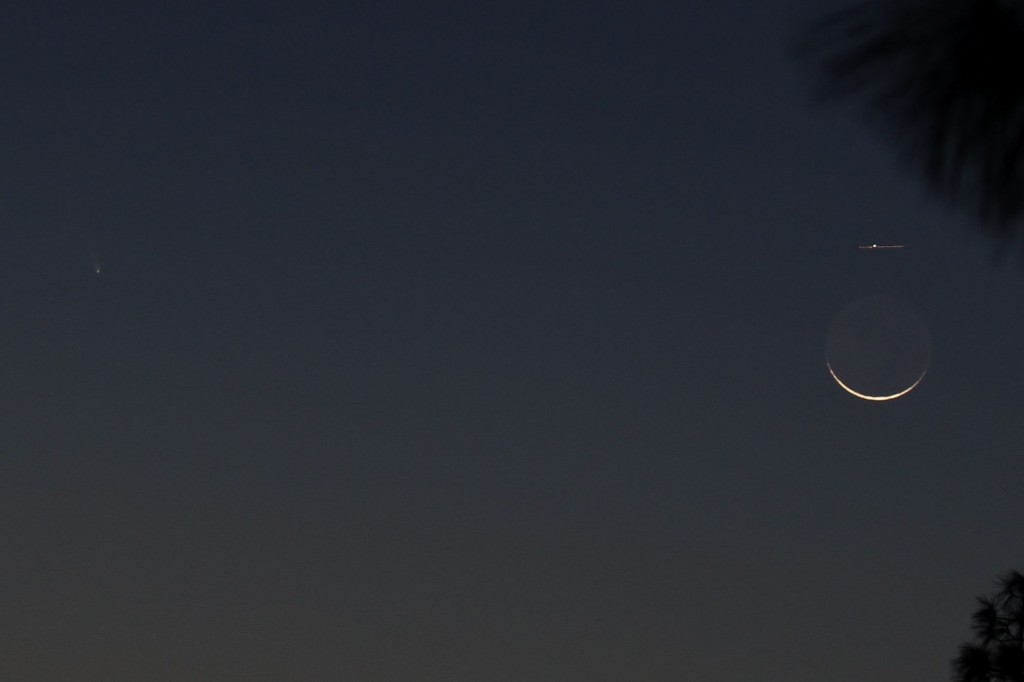
UPDATED 20:00 PST. 11/03/2013
A couple more PANSTARRS pictures from Monday 11th March 2013 in the hills above Los Angeles. I think the air was even clearer than last night, and there was no cloud to speak of. First shot here includes an aircraft coming into LAX. In the second shot, the bright point below the comet is Mars. Hope to catch the crescent moon in shot on Wednesday 13th.
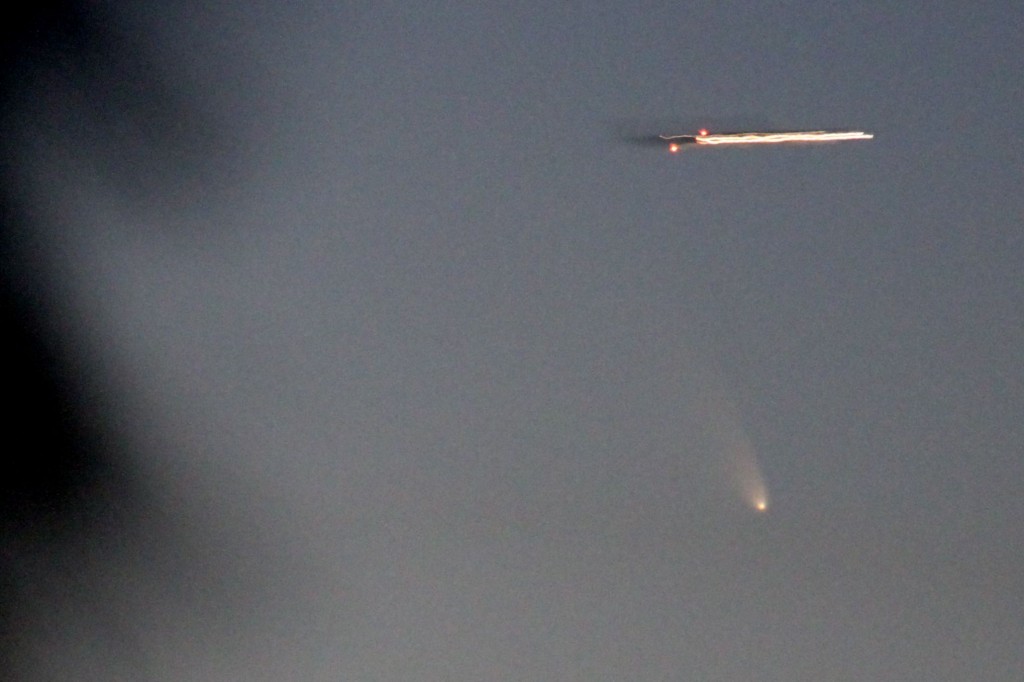
I was too busy last night finding the thing to notice, but I wouldn’t describe this as a ‘naked eye’ comet – so far. Detectable in 7×40 binoculars; much better in 15 x 70s.
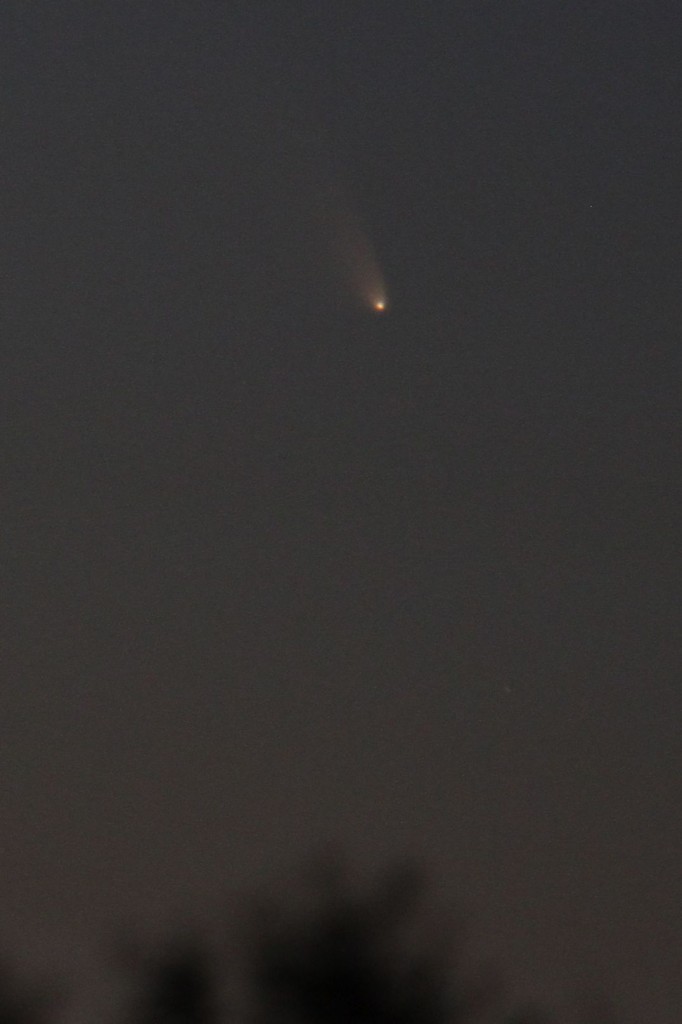
10th March 2013
Here are my first pictures of comet PANSTARRS c/2011 L4, taken shortly after sunset from the hills above Los Angeles on 10th March 2013 between 19.30 and 19.45 PST. I’m hoping to get some more shots when the comet is close to the moon on Wednesday 13th, and will update if successful. Quite a challenging subject and my first comet! Exposure info. for these: Canon 7D, 200mm and 400mm, f.5.0-5.6, 1/4 s to 1s, ISO 800 and 1600.
Picture from here 10th March 2013:
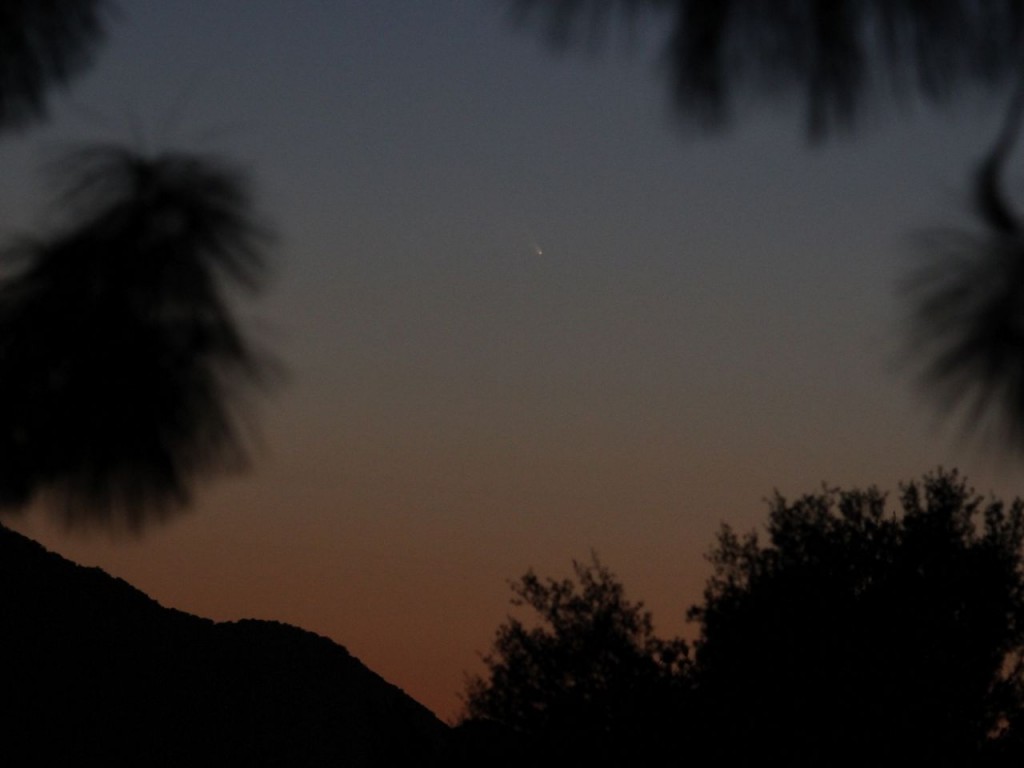
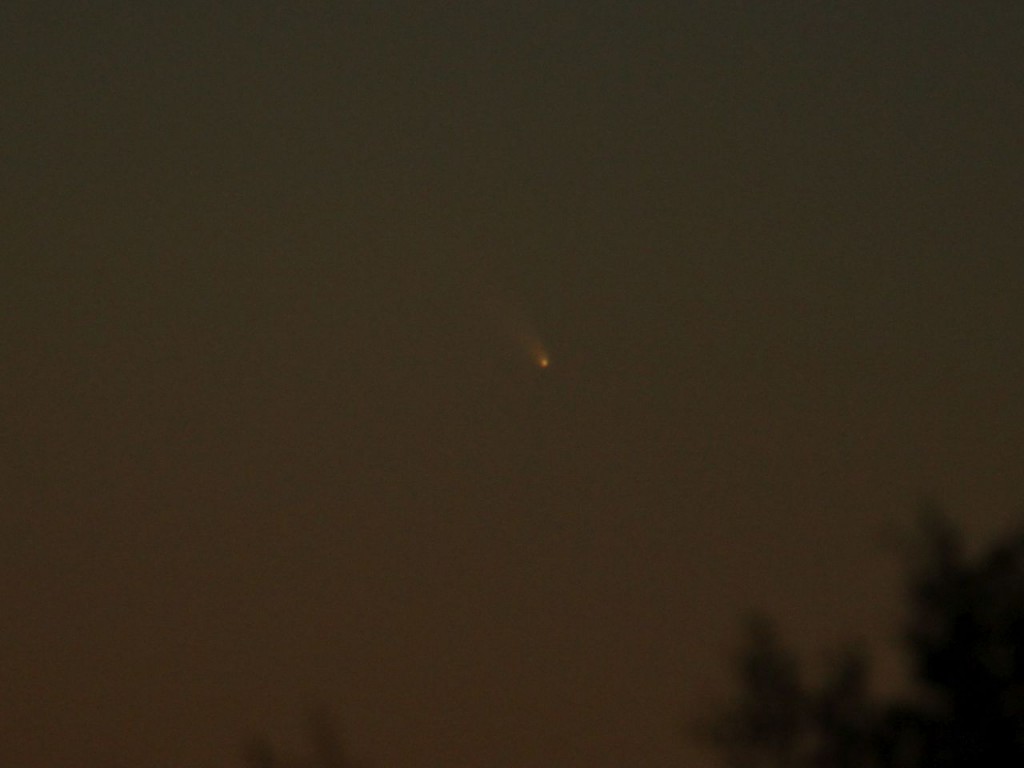
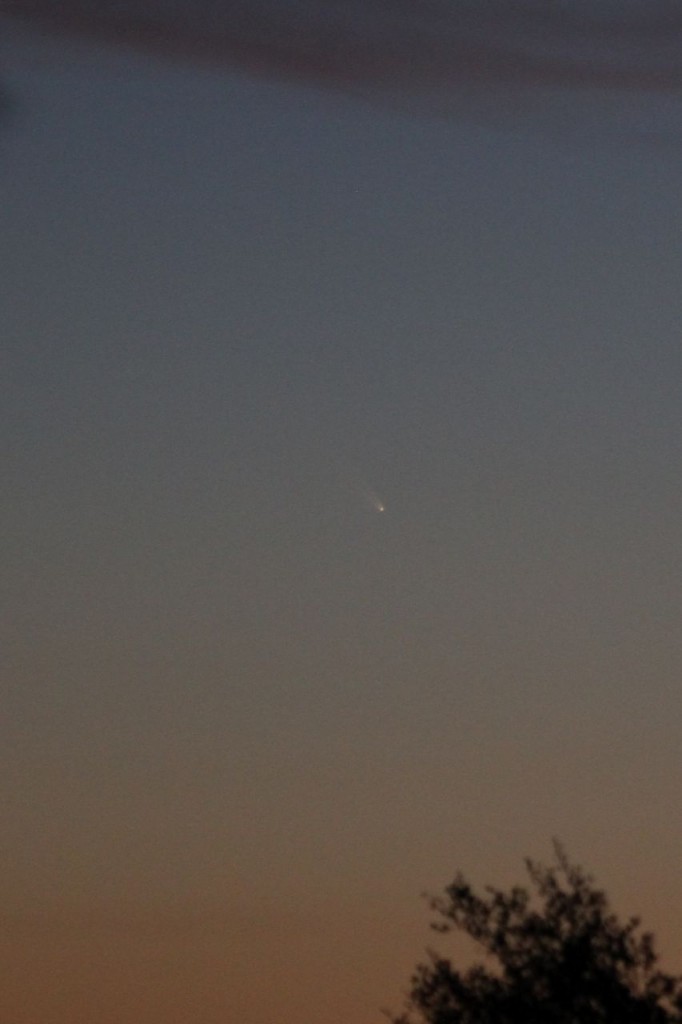

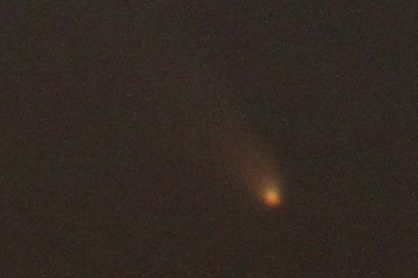
If you missed Pan-STARRS c/2011 L4, come back in 100 million years or so; or make your own comet.
Here’s an even better view of Pan-STARRS C/2012 L4, thanks to NASA:

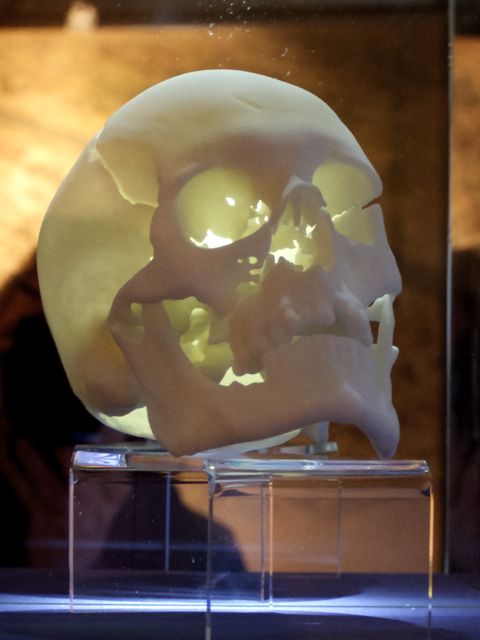
Spending time in my original home town of Leicester last week was a chance to get better acquainted with the city’s recently recovered celebrity, King Richard III no less, at an exhibition in the ancient Guildhall. I also got to visit another of my favourite Leicester museums, The New Walk Museum and Art Gallery, which has its own bones to shout about.

Richard III
The search for Richard started in August last year, when the University of Leicester working with the King Richard III Society discovered and recovered a skeleton – everything but its feet – from a central Leicester car park: a car park that overlays the site of the former Greyfriars Priory.
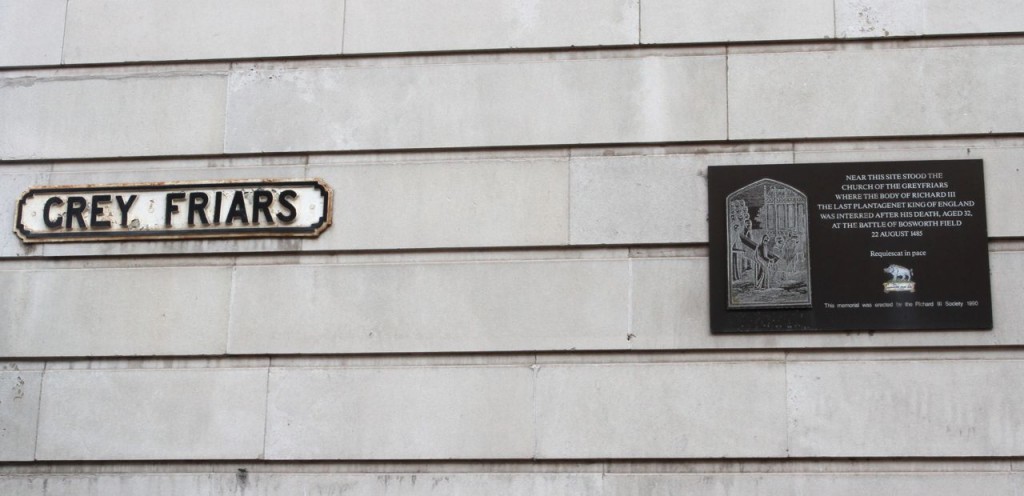

With a barrage of forensic tests and historical interpretation brought to bear over several months, including a DNA match with a living descendant, the remains were finally declared the real deal in February this year.
An unlikely prospect made good for historians and archaeologists, I’m guessing I’m not the only one raised in the city for whom the find has a special fascination. I lived close to the King Richard’s Road; and as kids we visited nearby Bosworth Field, where Richard fell in 1485; and I can remember some rivalry with the local ‘King Dick’s’ school. The science labs where I studied for A-Levels were literally a stone’s throw from the burial site. I’m not suggesting Leicester folk spend all their time sat round thinking about history, but there’s always been a general awareness in the air.

Richard’s character in life, unambiguously portrayed by Shakespeare as one of murderous villainy, is disputed – not least by the splendidly motivated Richard III Society. But there’s no doubting his popularity in death – not if the queues to the exhibition are anything to go by; I gave up on my first attempt and came back early the next day.

Rather than the real skeleton being on display, there’s a model of the skull and a light-table graphic representation of the bones. The side-on curved spine characteristic of scoliosis is clearly visible: doubtless the origin of historical reports/myths/exaggerations on Richard’s appearance and gait.
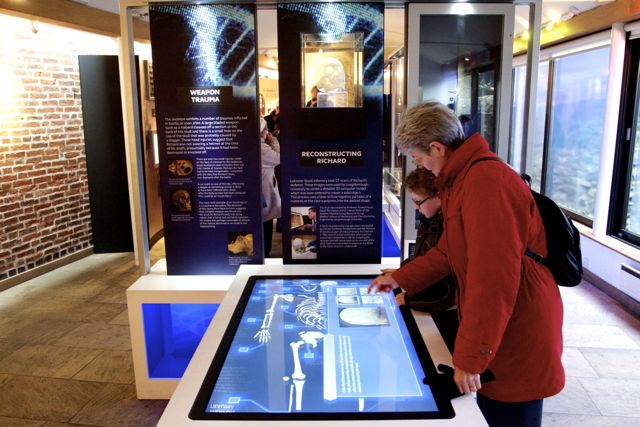
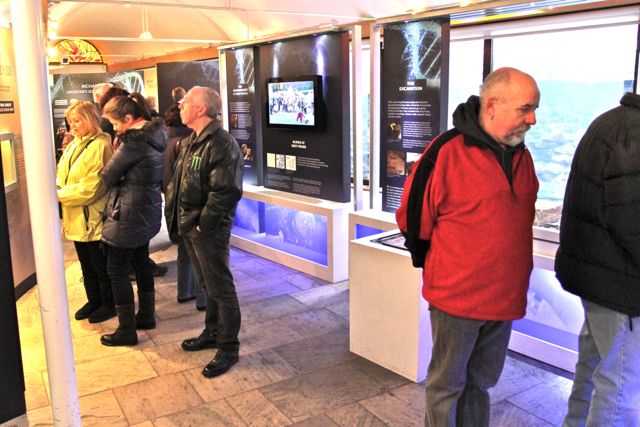
The suite of scientific tests used to characterise the remains included DNA Sequencing for identification, Radiocarbon Dating for age at death (1450-1538), Stable Isotope Analysis (tooth enamel) and Calculus Analysis (tooth plaque) for diet, health and lifestyle. The Leicester University team successfully matched mitochondrial DNA from Richard’s teeth with that from his living descendant Michael Ibsen. For more on the science, see Leicester University’s Richard III website.
New Walk Museum
Passing on Richard’s queue that first day gave me plenty of time to explore Leicester’s New Walk Museum and Art Gallery.

I’m spoilt for museums in London, but still have a soft spot for Leicester’s New Walk. It was the first museum I visited as a child: with an indoor goldfish pond and scary Egyptian mummies standing at the top of the stairs as you went in. The fish have gone, but the mummies are still there, better contextualised now in a special ancient Egypt exhibit. And overall they’ve done a great job of keeping up with the times.
On this occasion, supporting a special exhibition on DNA, I caught a lunchtime lecture on the human genome, by Dr Ed Hollox, a Leicester University geneticist whose talk focused on the genetic basis and geographical distribution of milk (lactose) intolerance.

The Leicester group have also printed a 130 volume hard copy of the entire human genome – as a communication exercise in getting over the sheer size of the thing. The volumes, printed in tiny 4 point font, are on display at New Walk.
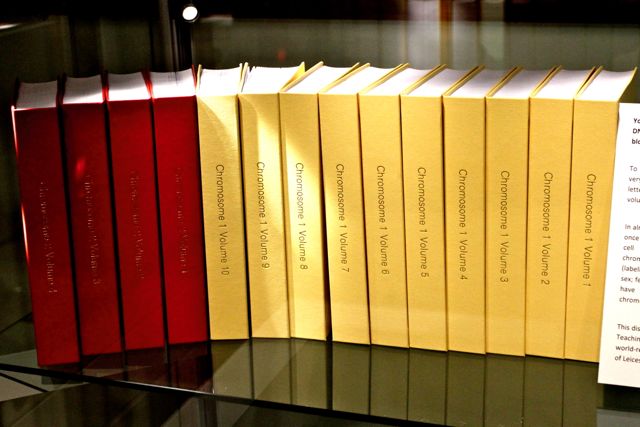
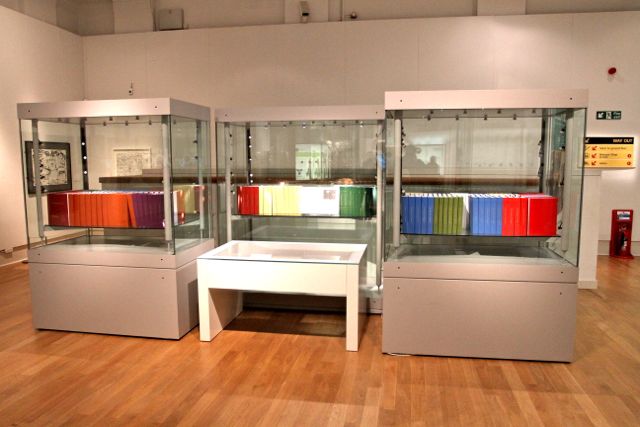
The Rutland Dinosaur
Back to the bones, and this c.168 million year old Ceteosaurus Oxoniensis , known as The Rutland Dinosaur.
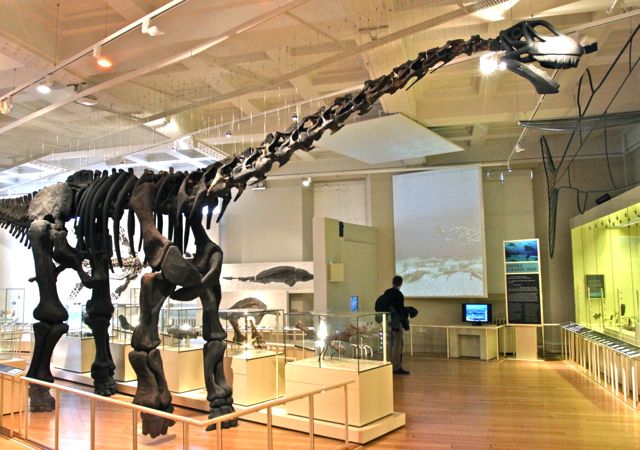

The long-necked herbivore’s fossilised remains, recovered in 1968 from Great Casterton, Rutland – the county just East of Leicestershire – have a special claim as the most complete (about 40%) Sauropod found in the United Kingdom.
Connections
I’m not alone in my childhood memories of New Walk Museum. In this video, Sir David Attenborough, who hails from Leicester and stays close to the museum, recalls his early impressions. Incidentally, the chair he mentions, belonging to the giant Daniel Lambert, is now in Leicester’s Newarke Houses Museum – but that’s a different story.
Let’s not forget too that one of the oldest fossils in the world is kept at New Walk: the pre-Cambrian Charnia fossil, as featured in Attenborough’s First Life series (for more on that, see Return to the Land of Charnia).
All of which lets me finish on a nice obscure link, almost as unlikely as finding Richard III in a car park. Which is to realise the roof tiles from the Greyfriars Priory, recovered from the excavation and featured in the Guildhall exhibition, come from the very same Swithland slate quarry where Charnia was found.

With the news today that Iran has sent a monkey into space, it seems appropriate to post these pictures of the less than luxury accommodation occupied by chimpanzee Ham in an earlier era of space exploration.
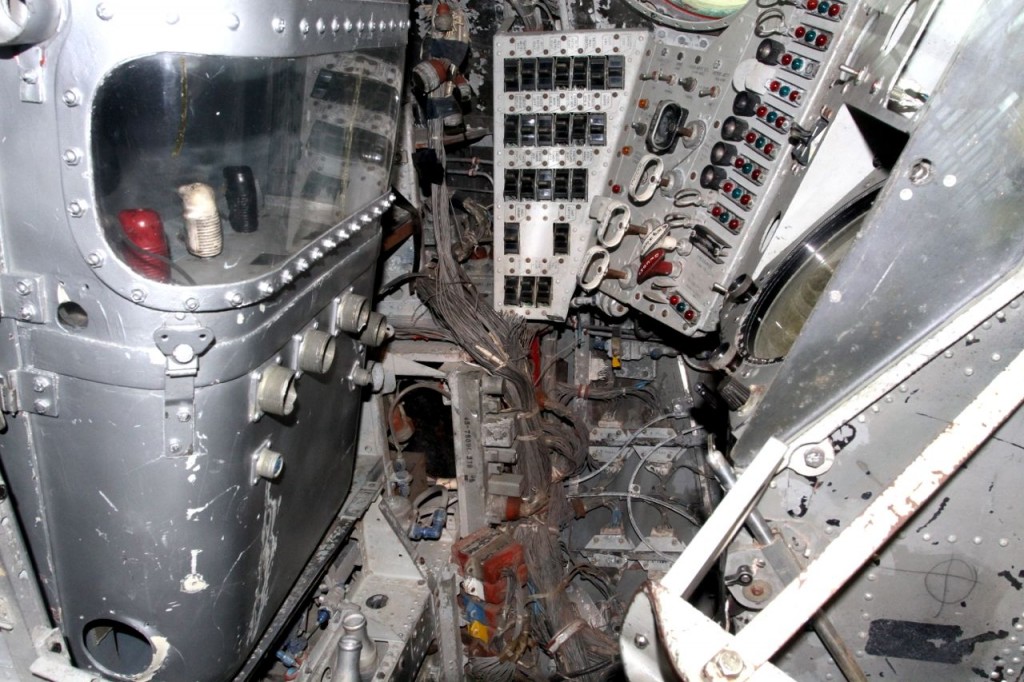
I checked out the Mercury-Redstone 2 capsule on display at the California Science Center while waiting to view the Space Shuttle last week.
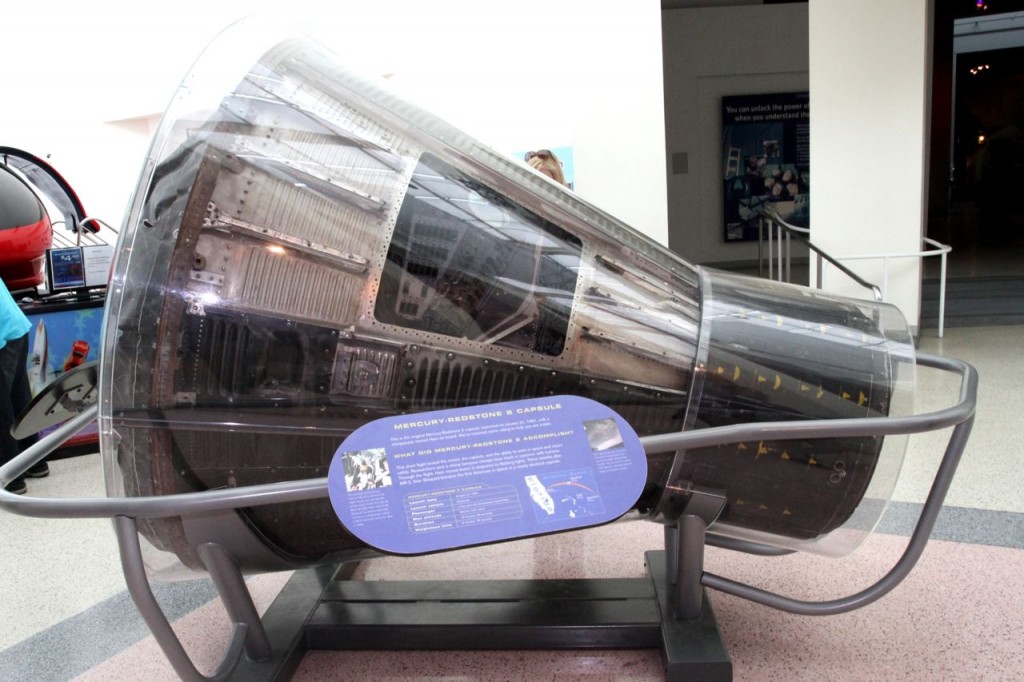
Four year old Ham, who was an ape rather than a monkey, launched into space on 31st January 1961. He proved that beings similar to humans could survive and perform functions in space: to which end Ham was given a series of levers to pull on command (red, white, and black above).
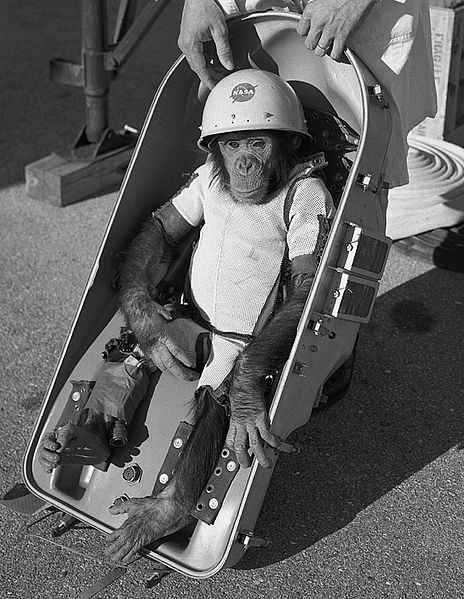
It’s quite a mess in there:
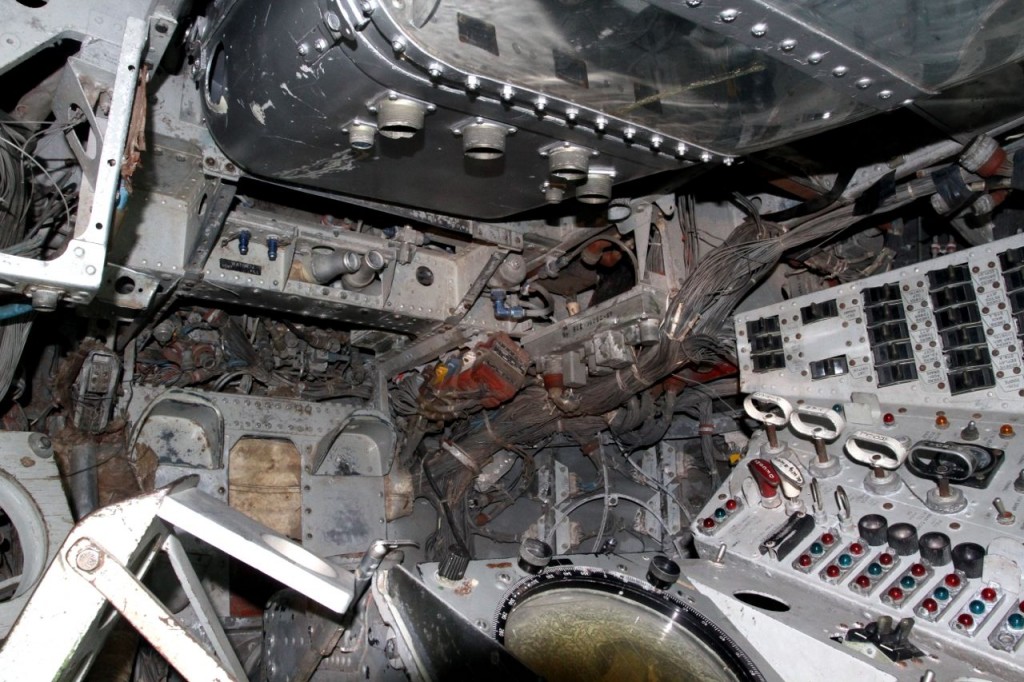
Amazingly, the capsule Alan Shepard piloted to orbit three months later didn’t look that much different.
Ham beats the Iranian monkey on altitude, reaching 157 miles against the Iranian’s 75 miles – not that either would be aware of how high they were. The BBC report suggests the Iranian’s were testing the acceleration and deceleration of the rocket – although there’s the inevitiable ambiguity over why they’d want to do that, and the implications for weapons testing [monkey survives = warhead survives ?].
In related news, the U.S. National Institutes of Health announced this month they’d be stopping the use of chimpanzees for medical research; although I’m not sure where that leaves potential future space chimps.
Also of interest:
Guardian article on Ham http://www.theguardian.com/science/animal-magic/2013/dec/16/ham-chimpanzee-hero-or-victim?